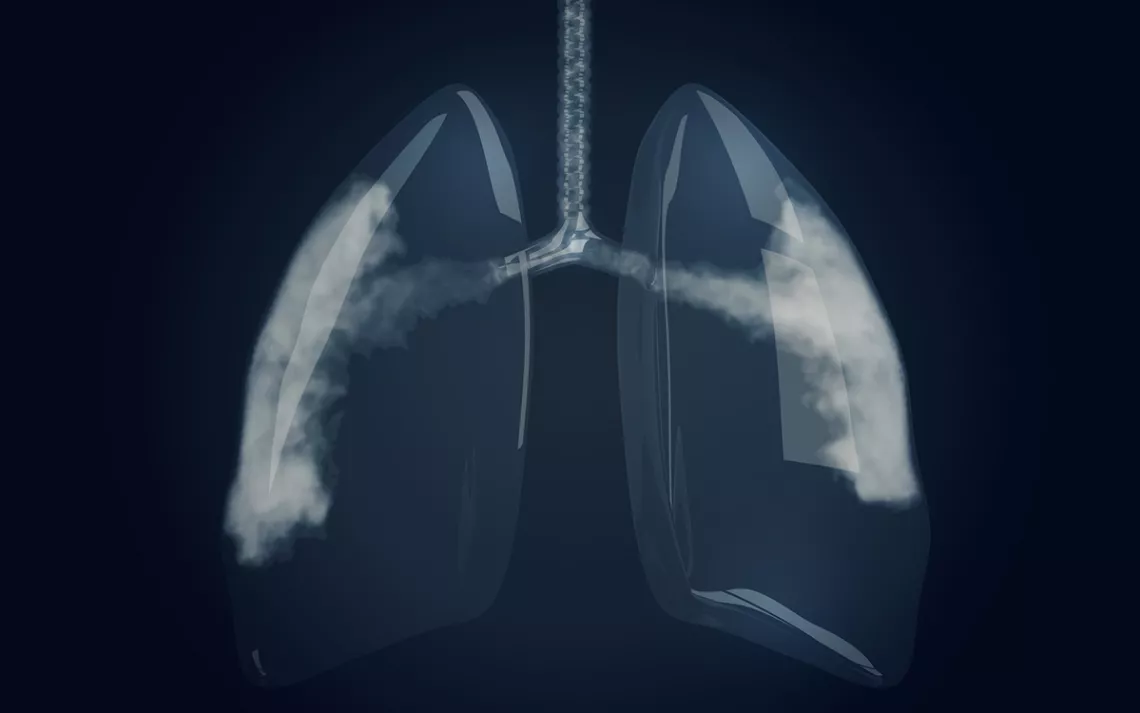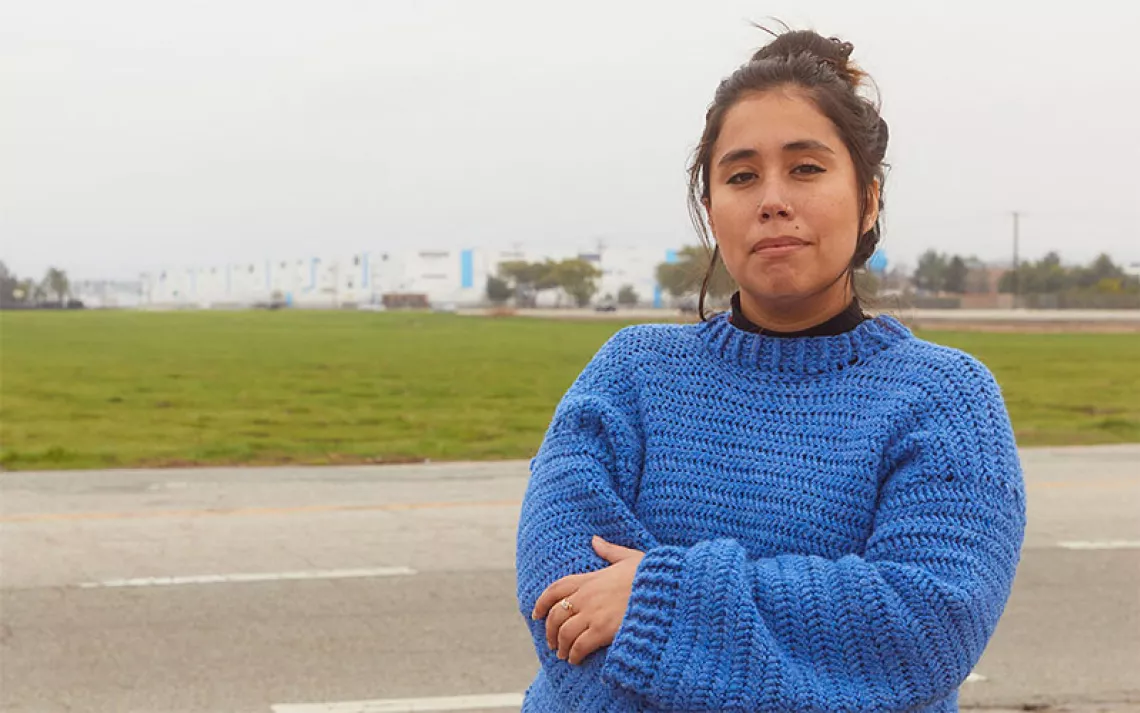People of Color Are More Likely to Die of Lung Cancer Than White Americans
Systemic racial health-care disparities persist, according to a new report

Photo by tuulijumala/iStock
Some of the best hospitals in the United States are in Washington, DC, the seat of American democracy. But that doesn’t mean the health care they offer is available to everyone. In the District of Columbia, Black residents are 126 percent more likely to be diagnosed with lung cancer than white residents.
The nation’s capital is just one coordinate of the systemic racial disparities that plague the map of American health care nationwide, according to the State of Lung Cancer 2021 report from the American Lung Association (ALA). For the second year in a row, the ALA has paired a national analysis of trends in lung cancer with a focus on the outcomes of the disease among racial and ethnic groups, state by state. The analysis found that a person of color is less likely to be screened and diagnosed for lung cancer in early stages of the disease than white Americans and less likely to receive life-saving treatments such as surgery.
The report does offer good news: While 240,000 Americans will be diagnosed with lung cancer this year, more are surviving the disease than ever before. The national five-year survival rate went from 14.5 percent to 23.7 percent.
However, a different story emerges when that data is sifted out according to racial and ethnic backgrounds. The color of your skin and the state in which you live have a profound impact on whether you are likely to develop lung cancer and what your prognosis might be, according to Erika Sward, the national assistant vice president of advocacy for the ALA.
“These findings underscore huge disparities associated with lung cancer and many of the underlying contributors to it,” Sward told Sierra. “We see these disparities among Black and Native Americans; we see them at the national level but also in individual states. When you look at the number of uninsured or underinsured, smoking rates, and people of color in a particular area of the United States, you start to see states hardest hit by lung cancer.”
There are a variety of factors that, taken together, increase a person’s likelihood of developing lung cancer—the state in which you live, whether you smoke or are exposed to secondhand smoke, whether you are exposed to radon gas in your home, the availability of health care or life-saving treatments like surgery, and early diagnosis, among others. In Washington, DC, for example, the lack of hospitals and other health services in certain parts of the city, and the large number of Black Americans in the city who smoke—combined with the inherent systemic racism associated with health care in general—are in part responsible for the high rates of lung cancer.
Smoking remains the most significant determinant of the likelihood to develop lung cancer. “What your state does to prevent tobacco use among youth and help adult users end their addiction, and also whether or not a state has passed a law that protects everyone from secondhand smoke in workplaces and public places, has an impact,” Sward says.
Radon is the second leading cause of lung cancer behind tobacco use and secondhand smoke exposure. Radon is a naturally occurring gas that comes through the foundation of a home. Anyone can be exposed to it, but in some states, exposure tends to be higher. According to the State of Lung Cancer 2021 report, North Dakota and South Dakota ranked worst for radon test results, with Hawai'i and Louisiana testing best.
Any single factor may not in itself increase a person’s likelihood of developing lung cancer. However, if numerous risk factors are present, such as tobacco use, exposure to radon, and long-term exposure to the fine particulate matter in air pollution like ozone, that person may be more likely to develop lung cancer.
Overall, Black Americans were shown to have an 18 percent survival rate compared with a 23.7 percent rate nationwide. Meanwhile, the rate of early diagnosis of lung cancer for Black Americans was found to be 18 percent worse than for white Americans, with surgical treatment 23 percent worse. The data shows the same story for Latinos and Indigenous people: Early diagnosis for Latinos was 16 percent worse than for white Americans and 17 percent worse for Indigenous people, with surgical treatment for Indigenous people scoring at 25 percent worse than for white Americans. The report found that 46 percent of lung cancer cases are not caught until a late stage, when it is harder to treat—the survival rate for late-stage lung cancer drops to only 6 percent for all patients.
That should worry residents in the nation’s most populous state. California, traditionally ground zero for cities with some of the country’s worst ozone and year-round air pollution, had one of the worst scores when it comes to the percent of patients receiving no treatment. California is tied for lowest in the nation for lung cancer screening rates among high-risk individuals. Only 1 percent of those eligible to be screened are getting screened, according to the new analysis, though the state scored among the best for those diagnosing new cases.
Louisiana, Mississippi, Kentucky, Oklahoma, and Alabama had the worst rate of lung cancer survival overall, whereas survival rates were highest in Connecticut, Rhode Island, New York, Minnesota, and New Jersey. Early diagnosis rates were the highest in Massachusetts and the lowest in Hawai'i. Utah showed the most new cases of the disease nationwide.
The likelihood of surviving lung cancer is fundamentally tied to whether someone who is high risk can be screened and diagnosed early on, when surgical interventions can save lives. That means access to health care is key to survival. Currently, millions of Americans still do not have health care because the state in which they reside elected not to expand Medicaid when the Affordable Care Act, or Obamacare, was signed into law. If those same people also make too little money to be eligible for subsidized health plans, they fall into a so-called coverage gap. Currently, 12 states refuse to expand Medicaid.
The Build Back Better plan now being considered by Congress includes an expansion of Medicaid with billions in new federal funding. Under the provision, people below the poverty line who don’t qualify for Medicaid would become eligible for tax credits to pay for health care.
The American Lung Association is pointing to a change in the criteria for evaluating someone as high risk for lung cancer as progress in getting more people screened and treated. Earlier this year, the guidelines for those considered to be high risk expanded. If you are 55 years old or older, smoked one pack a day for 20 years or two packs a day for 10 years, and have quit smoking in the last 15 years or are still smoking, you are considered high risk for lung disease. Because of the expanded criteria, there are many more women and people of color who are eligible for screening—a process that involves low-dose CT scans that can detect lung cancer at a much earlier phase. Currently, there is no annual screening equivalent for lung disease as there is for colorectal or breast cancer.
The ALA offers a quiz at www.savedbythescan.org that anyone can take to determine whether they are at high risk for lung cancer. The quiz asks about a person’s medical history and other factors, and delivers a “finding of risk” that a patient can print and take to their doctor for consultation and possible screening.
“Having quality and affordable health care is directly tied to cancer mortality,” Sward says. “We have to do a better job, particularly for people of color in the United States, of making sure everyone has access to quality and affordable health care. No one deserves to have lung cancer.”
 The Magazine of The Sierra Club
The Magazine of The Sierra Club



